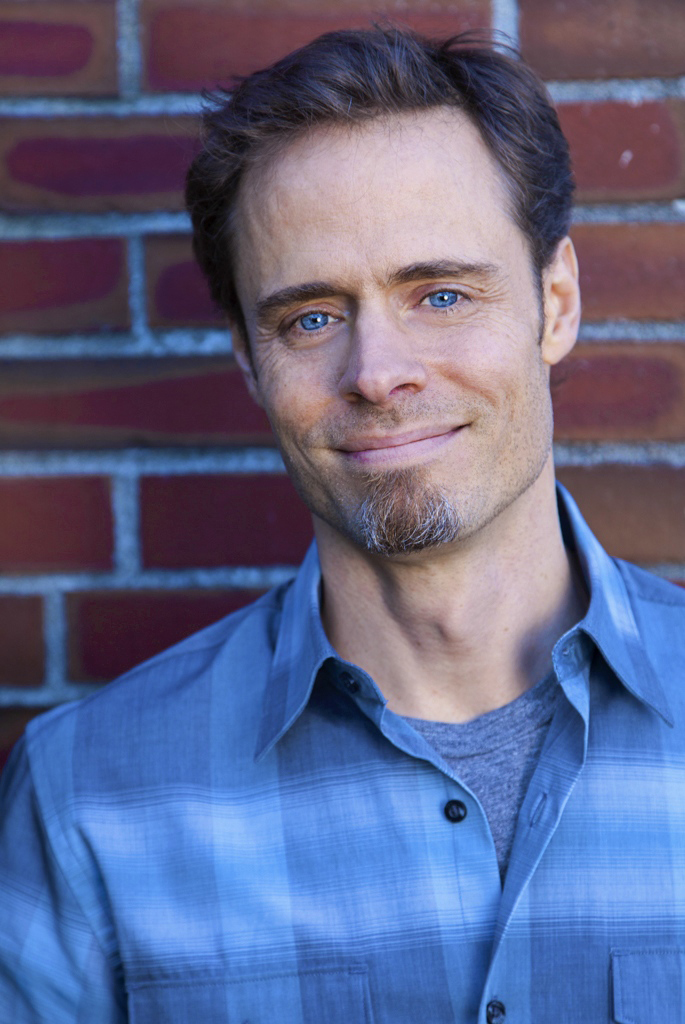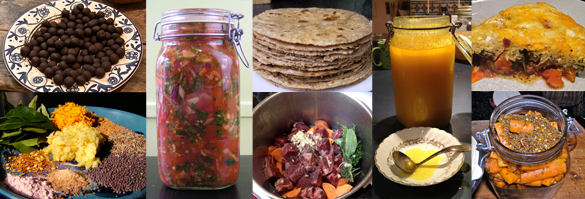What is “Food As Medicine”?
The concept of ‘food as medicine’ is rooted in our most ancient of healing traditions, including Greek, Indian and Chinese medicine. If we consider the anthropological evidence it is very likely that our hunter-gatherer ancestors learned about medicinal herbs by observing wild animals deliberately eating certain plants in their diet as a way to treat different health issues. For all of nature and throughout the history of medicine there has never been any real separation between food and medicine, and the present work aims to restore this connection. Informed by the theory and practices of Ayurveda and scientific research, Food As Medicine: The Theory and Practice of Food provides a practical and lucid model of what food is, how it impacts your health, and how to make the best choices in your diet – all depending on your individual needs. Includes detailed information on food preparation, cookware, herbs and spices, as well as delicious recipes and meal plans.
About Todd Caldecott
 Todd Caldecott is a medical herbalist, practitioner of Ayurveda and member of the American Herbalists Guild since 1997. He received his diploma at the Coastal Mountain College of Healing Arts in 1996, and continued his training studying Ayurveda in Vancouver with Dr. T. Sukumaran, and later in India at the Arya Vaidya Chikitsalayam. In 1997 Todd established a clinical practice in Nelson B.C., and worked with the Harrop Procter Community Cooperative until 2001 to conduct a botanical survey and undertake a study of non-timber forest products (NTFPs) community forests, including sustainable harvesting trials on Pipsissewa (Chimaphila umbellata), Wild Sarsaparilla (Aralia nudicaulis) and Devil’s club (Oplopanax horridus). From 1998 through 2004 Todd was an instructor and Director of Clinical Herbal Studies at Wild Rose College, where he developed a three year clinical program in Western Herbal Medicine. He is author of the textbook Ayurveda: The Divine Science of Life (Elsevier/Mosby, 2006), and editor of the newly published text Ayurveda in Nepal that summarizes the teachings of Vaidya Mana Bajra Bajracharya and his 800 year old tradition of Ayurveda. Food As Medicine: The Theory and Practice of Food is Todd’s third book. He can be reached through his website at www.toddcaldecott.com which features over 500 pages of free content on natural health and medicine.
Todd Caldecott is a medical herbalist, practitioner of Ayurveda and member of the American Herbalists Guild since 1997. He received his diploma at the Coastal Mountain College of Healing Arts in 1996, and continued his training studying Ayurveda in Vancouver with Dr. T. Sukumaran, and later in India at the Arya Vaidya Chikitsalayam. In 1997 Todd established a clinical practice in Nelson B.C., and worked with the Harrop Procter Community Cooperative until 2001 to conduct a botanical survey and undertake a study of non-timber forest products (NTFPs) community forests, including sustainable harvesting trials on Pipsissewa (Chimaphila umbellata), Wild Sarsaparilla (Aralia nudicaulis) and Devil’s club (Oplopanax horridus). From 1998 through 2004 Todd was an instructor and Director of Clinical Herbal Studies at Wild Rose College, where he developed a three year clinical program in Western Herbal Medicine. He is author of the textbook Ayurveda: The Divine Science of Life (Elsevier/Mosby, 2006), and editor of the newly published text Ayurveda in Nepal that summarizes the teachings of Vaidya Mana Bajra Bajracharya and his 800 year old tradition of Ayurveda. Food As Medicine: The Theory and Practice of Food is Todd’s third book. He can be reached through his website at www.toddcaldecott.com which features over 500 pages of free content on natural health and medicine.What is food?
“It may seem like a rather obvious and simple study, but the nature of food has proven to be a perplexing issue that seems to drive constant debate and controversy. One reason for this is that over the last century society has been led to believe that apart from supplying basic energy food has little bearing on physical and mental health. During this time we have seen farm-fresh whole foods become gradually displaced with manufactured replicas, while bearing witness to previously uncommon diseases such as heart disease and cancer which are now the first and second causes of death (with adverse drug reactions closing in at number three ). With the growing realization that human nutrition is a subject far more nuanced and complex than previously appreciated, the reductionist notion of food as nothing more than calories is now in the process of being deconstructed. With this subtlety and complication comes even more questions, and invariably, a lot of confusion.
The centrality and importance of food is resonant in all systems of traditional medicine, including the ancient Indian system of medicine called Ayurveda. In the most venerable and illustrious of medical texts of Ayurveda called the Charaka samhita (c. 2nd century BCE), the author recounts the details of a great meeting of medical minds in the Himalayas several thousand years ago. According to this text much of humanity had left off living as nomads and were now gathered in settled groups, engaged in the first attempts at rudimentary agriculture. While this did present several advantages over the nomadic way of hunting and gathering, the Charaka samhita states that early human civilization was plagued with chronic disease, and the purpose of this meeting was to understand and debate its cause. Recounting this discussion, the Charaka samhita presents each argument of the main proponents, including the notion that disease is caused by individual factors such as the mind and emotions, aging, the environment and genetics. The discussion ends when the venerable Punarvasu Atreya speaks up to comment on the impressive but nonetheless speculative arguments of his colleagues. “It is the wholesome use of food that promotes the health of a person”, says Atreya, “and that which is unwholesome is the cause of disease.
While this answer could appear simplistic, Atreya uses it to cut to the heart of the issue. It is not because we identify with illness or are cursed with bad genes that most of us get sick. Nor is it that we become ill if only to bear witness to the compassionate heart of our chosen deity, or by the same token, as the inevitability of our existential plight. Rather, the origin of the vast majority of our health problems is front and center, square in the face, right under our noses and at the tip of our tongues – the very stuff we put inside our bodies every day. Atreya says that rather than invest in speculative theories on health and disease that may or may not be true in the long run, look for the potential of disease in that which brings about life.
In the ancient system of medicine called Ayurveda which informs much of my approach to natural healing, the act of eating is seen as a divine sacrament to one’s very being, forming and building the structure of the body and mind like devotees building a place of worship and contemplation. Food is something much more powerful than mere nourishment – it forms the essence of your very being. It becomes who you are. You are food.”


